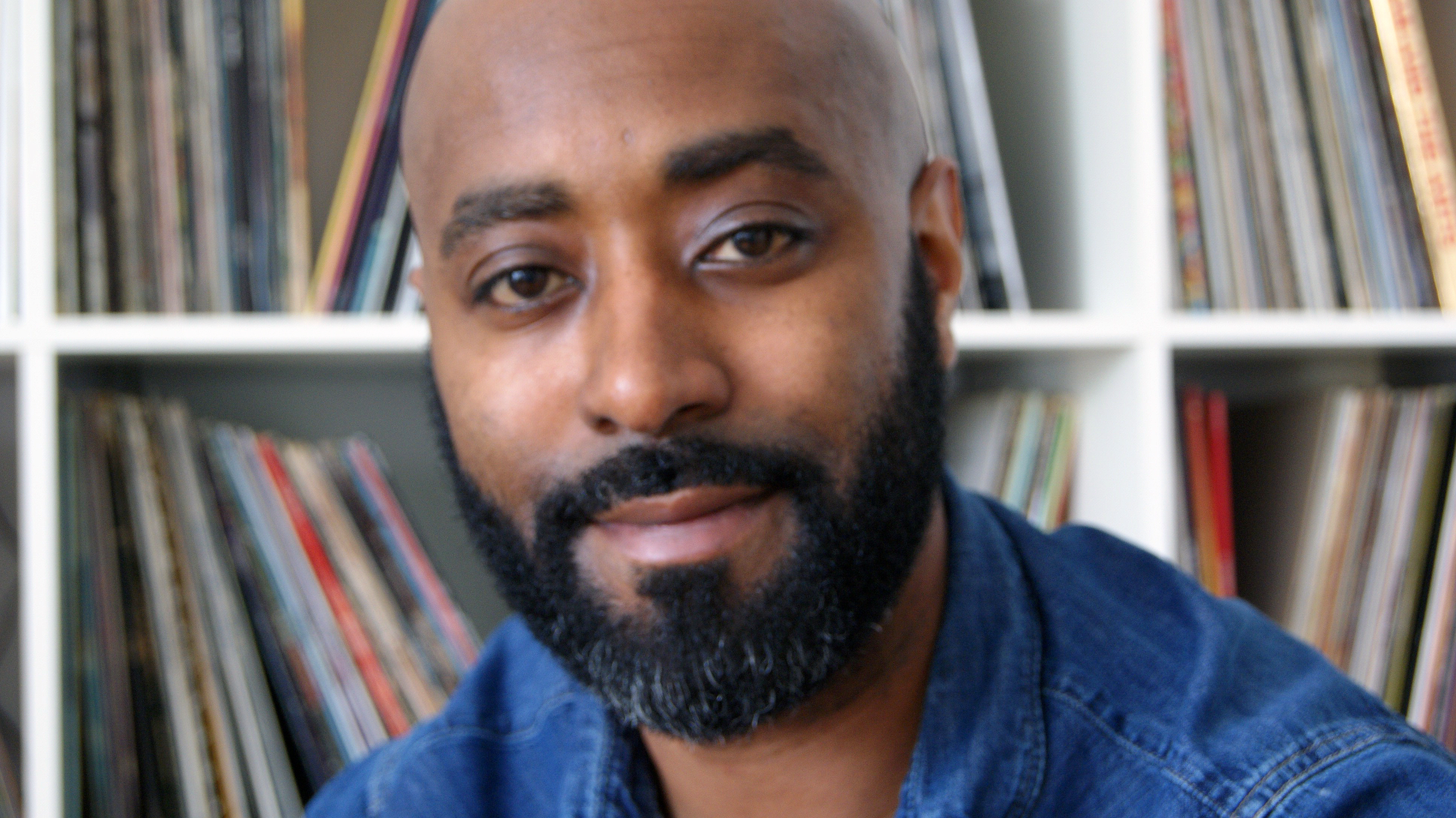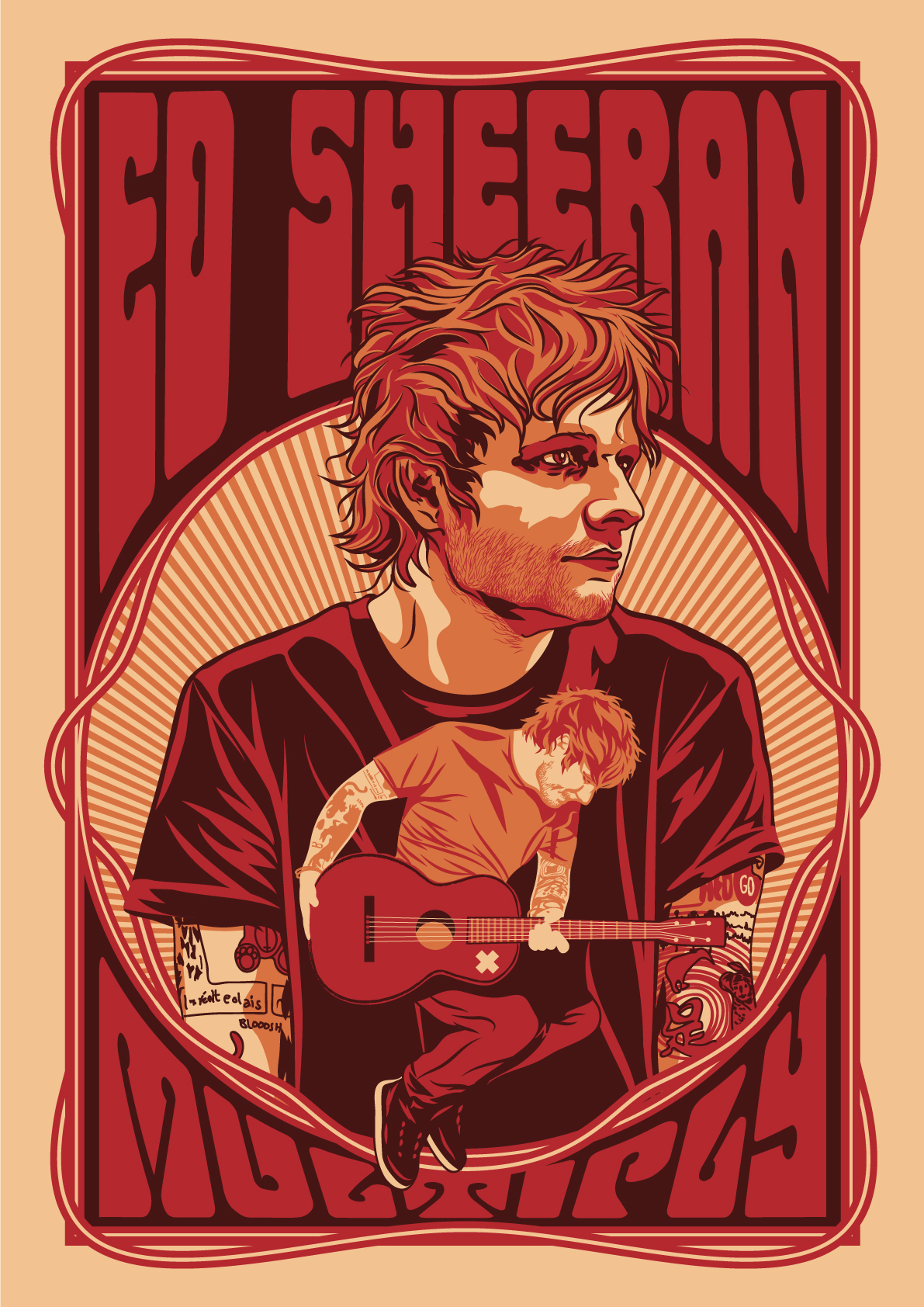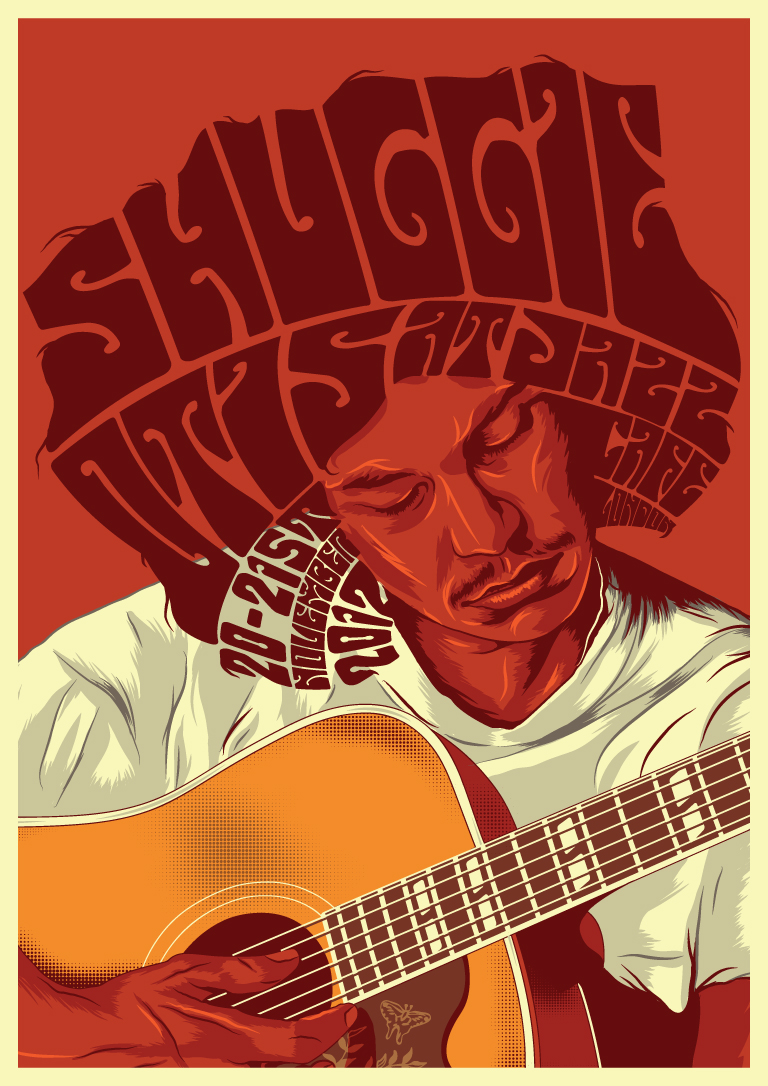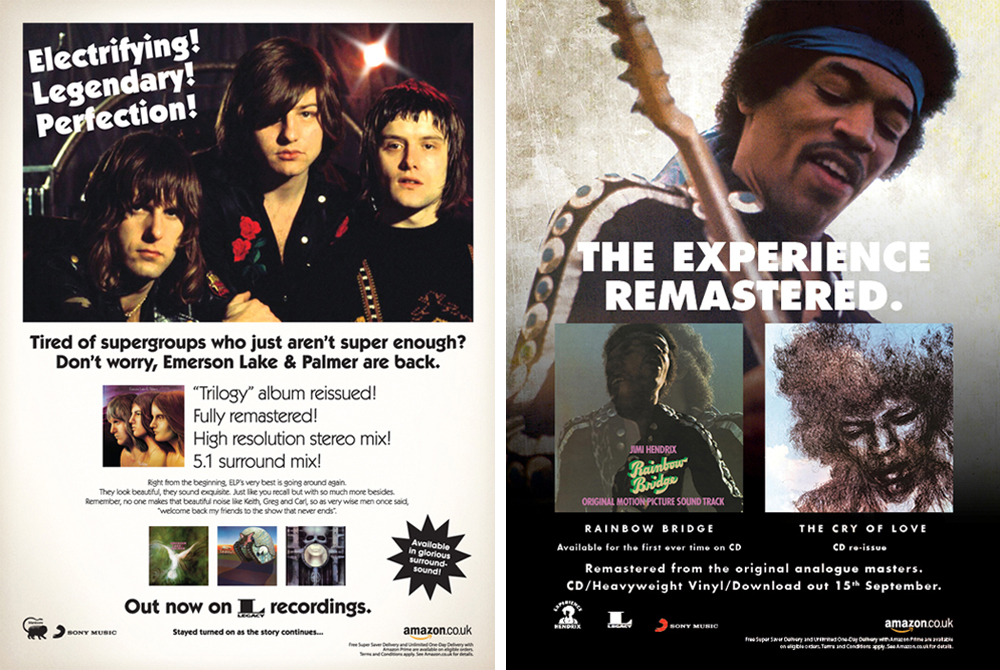Four Corners – Greg Bunbury: “One project demonstrated how graphic design could be a tool for social change”
Graphic designer, digital designer and illustrator Greg Bunbury has worked his way across the industry over the years after cutting his teeth at Interbrand. His proudest moment was when he realised that design has the power to elicit positive social change.
In his latest Four Corners interview, Jon Daniel talks to Bunbury, who reveals that his biggest challenge over his career has been a personal one – “Getting good at what I do”.

Music. Film. Art. Culture. The discipline of graphic design touches them all as our latest profiled creative demonstrates through his work. I came across the talents of this tenacious man several years ago and have watched him grow in both stature and confidence over the years to be the consummate designer he is today. Introducing Mr Greg Bunbury.
What’s your background?
I was born in Hackney to a Trinidadian mother and Guyanese father. Both my parents worked, so having to occupy myself as a kid I got into comic books, and originally wanted be an artist. Growing up in a time before the internet, images had a huge resonance. So I studied art & design through school all the way up to a BA level in Design Studies at London Metropolitan University (formerly London Guildhall University). After university I supplemented my education with courses in web design and printing.
Once I got a foothold in the industry, I worked my way up to head of creative for a marketing agency on b2b and corporate accounts, and now I work freelance as a graphic/digital designer and illustrator for record companies, film agencies and more integrated marketing agencies. I’ve also participated in poster art shows here and in the U.S.
How did you get started in your field of expertise?
At university I did work experience at a magazine publisher in the West End, where one of my lecturers was working, but once I graduated I really struggled to get anything in design. I ended up working for a PR/marketing agency for a couple of years, which was actually a blessing in disguise.
My degree was good in terms of theory, but it was here that I really learned marketing. After that I hustled hard, and chased down any and every opportunity I could. I worked for free, I did internships, I did my own projects and slowly it started coming together. I was doing odd jobs all the while, and one was working in a shop in the West End. This one girl I worked with had just finished an internship at Interbrand, so I asked her to put me in touch with her contact, and they offered me a stint there. That was the one job that changed everything. I considered it the Premiership of what I wanted to do, and I learned a hell of a lot in a short time. I think I was only supposed to be there a few weeks, but I just didn’t leave! No one seemed to notice, so I just kept showing up, and wound up working there for months. Long enough to get my foot into other doors.
What challenges did you face/overcome in getting into the industry and achieving your ambitions?
While there is definitely an issue in the creative industries regarding ethnic representation, which in itself can prove challenging, I can honestly say my biggest challenge was just getting good at what I do. It takes a lot of trial, error and a tough jaw to get good at design (or any creative discipline), but especially in advertising and marketing. Mostly it just takes time to develop your own process. Like Miles Davis said: “Sometimes it takes you a long time to sound like yourself”.
When I graduated I can honestly say my work was awful! I had talent, but talent is meaningless without focus. It was only when I got proactive about why I wasn’t getting jobs, what my portfolio needed, and better ways to present myself that things began to change. So perhaps I needed that level of adversity to push myself forward.
Who and/or What are your greatest inspirations and influences?
John Berger’s ‘Ways Of Seeing’ changed my life at University, and it was the point where I recognised visual communication as a kind of language. Milton Glaser was my first design hero, but George Lois showed me that powerful images could be commercial, artistic and even political at the same time. Drew Struzan’s film posters and also Bill Graham for his Fillmore poster art, both of which have been big influences in my illustration work. And on a side note Carlton Douglas Ridenhour, AKA Chuck D. When I got into music as a kid I was a huge Public Enemy fan, and re-drew that iconic logo on everything – pencil cases, rucksacks, textbooks. I think that’s when I first became aware of graphic design.

What is your best piece of work or the project you are most proud of?
While working as a graphic designer for agency Mabox, I created a brand for The Learning Trust in Hackney, in support of a three-year programme to improve literacy across the borough. I came up with the concept and logo for ‘Words Unite’, and worked on the broader campaign. Being from the area it was a project very close to my heart, and I put a lot of passion into it. The campaign was active in all 74 schools across the borough, engaging 15,000 students and adult learners. I was proud of the work, but also that it demonstrated how graphic design could be a tool for social change.


What would be your dream job or project?
After all this time after that first bit of work experience, I think I would still like to try my hand in a magazine environment. Though print media is continually on the decline, I still believe there’s a certain power in printed periodicals beyond their digital counterparts. Just look at what it did for George Lois at Esquire, and today’s leading creatives like Arem Duplessis, going from The New York Times to Apple.

Please name some people in your field that you believe deserve credit or recognition, and why.
I’m going to be controversial and say Jon Daniel! Not only for his prolific body of work, but for the inspiration and positivity you constantly champion. I had never met an art director of colour, much less worked with one, so when I discovered an article you wrote in 2011, it was another game-changing moment for me. It also introduced me to the work of design legends like Georg Olden and Archie Boston, and a wider world of creativities across the Afro-Caribbean diaspora I had no idea existed.

What’s your best piece of advice for those wanting to follow in your footsteps?
Design all the time, every single day. Try and focus on constant improvement – you should always be in a state of learning, despite whatever obstacles present themselves. Don’t wait for clients – if you can’t find a way, make one. Find an example of design you think you can be better – a poster, a menu in a restaurant, a logo on a shirt – and just do it. It might lead to paid work, and it might not. But you will grow in leaps and bounds nonetheless.

What’s next for you?
At this stage I’d like a long-standing relationship with a progressive brand or platform, maybe even in-house. With freelancing or contract work the life-cycle of a project can be short in scope, and there isn’t always the opportunity to take the work beyond the deliverables. So I’d like to get my teeth into a new challenge and spend time growing and developing it, demonstrating how design can transform business and inspire innovation.

For more information visit:
Network:
THE CARIBBEAN:
DIGITAL is the National Gallery of Jamaica’s first submission-based exhibition to be open to artists from the Caribbean and Caribbean diaspora. The exhibition features two artistic collaborations and the work of several individual artists, including Ronald Williams, Rodell Warner, Arnaldo James, Darron Clarke and Dionne C. Walker to name a few. The exhibition runs until 4 July 2016.
EUROPE:
ASTRONAUTS OF INNER SPACE (Last days!! – Closing 4 June 2016)
A collaboration between British conceptual artist Kate Daudy, Italian designer Paola Petrobelli and Swiss sound artist Philippe Ciompi. They have orchestrated the transformation of 50 Golborne Gallery into an immersive installation with an aim of making one experience an interior space in a different way. The whole place will evoke William Burroughs’ ‘inner space’, where the conscious and the unconscious combine to provoke memories and thoughts from the observer and to celebrate a full absorption into the living of everyday life.
AFRICA:
EVERYDAY EDUCATION Closes 5 June 2016! Told through the lens of three travelling photographers, Everyday Education shares the marvellous tales of education along the eastern corridor of Africa.
The trio, from the United States, South Africa, and Tanzania, visited 20 schools documenting learners, teachers, and leaders. Rebecca Crook, Zach Louw, and Sam Satchu aim to use visual storytelling to highlight the stories of innovative and resilient education, and to influence others to celebrate and share stories of educators in their own lives.
THE U.S:
“WHO WE BE” @ CANTOR CENTER FOR THE ARTS AT STANFORD UNIVERSITY (TIL JUNE 27, 2016):This timely and innovative exhibition explores visual culture since 1965 through the lens of cultural, political and demographic change. “From the Watts uprising to the #BlackLivesMatter movement, from multiculturalism through hiphop to the reception of post-identity art,” it considers how Americans see race today. Inspired by Stanford faculty member Jeff Chang’s much lauded book “Who We Be: A Cultural History of Race in Post-Civil Rights America,”
the exhibition features art from the Cantor collection, selections from the Stanford Institute for Diversity in the Arts, as well as loaned works.
If you have any forthcoming events that you would like to be considered for inclusion in this column, please do not hesitate to contact me by email at info at jon-daniel dot com.
———————————————————————————————————————–
Jon Daniel is a London-based Independent Creative Director, Designer and Curator. For more information visit his website at www.jon-daniel.com | or his blog at www.visual-intellectual.com
-
Post a comment







